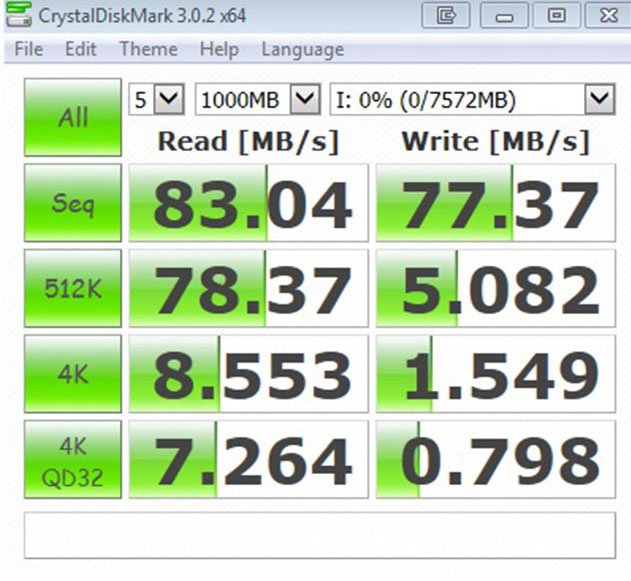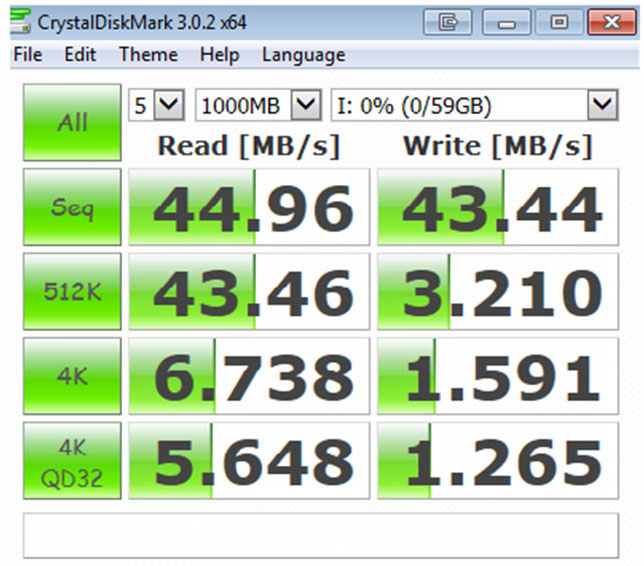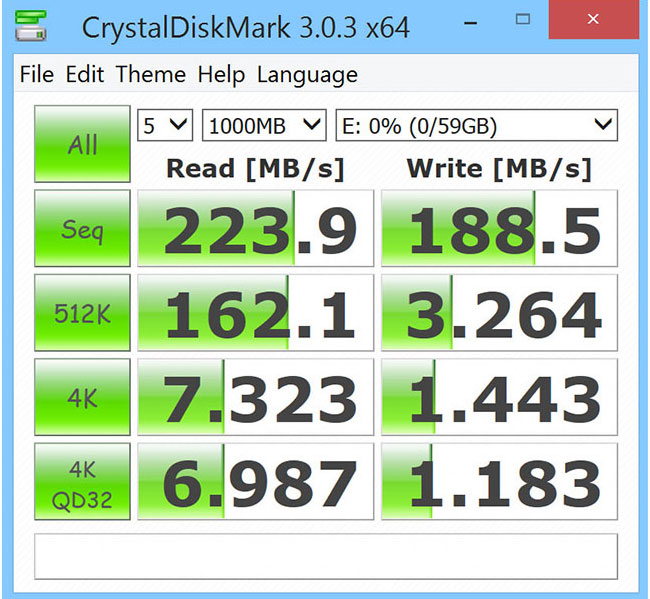A few weeks ago we received what is supposedly the fastest SD card on the planet (at least until a faster one will emerge) – the SanDisk Extreme PRO 280MB/s SDXC UHS-II. We decided to check it out an on the way explain a bit about the two new technologies/standards it uses, as well as have a look at Sandisk’s new ultra fast card reader.
The SanDisk Extreme PRO 280MB/s SDXC UHS-II brings two new standards to the table:
- UHS II – the second generation standard for the Ultra High Speed bus. This iteration doubles the theoretical upper transfer speed limit to 312MB/s (from 156MB/s on the UHS-I). The new standard requires an additional row of physical pins (see video/image).
- UHS Speed Class 3 (U3) – set the minimum speed limit of the card at 30MB/s (important for high bitrate videos).
The SanDisk Extreme PRO 280MB/s SDXC UHS-II is not the only UHS-II card on the market right now. Toshiba announced its own UHS II card called EXCERIA PRO. Looking on the official numbers the Sandisk card is faster, however from our experience, official numbers are sometimes not as accurate as we might want them to be (which you can see from our real world scores below).
Is this the fastest SD card?
Testing equipment
On this review we tested 2 memory cards – the new SanDisk Extreme PRO 64GB 280MB/s UHS-II and the SanDisk Extreme Pro 8GB 95MB/s SDXC UHS-I using two different card readers Lexar Dual Slot USB 3.0 Reader Professional and the SanDisk Extreme PRO UHS-II SD Reader/Writer. We also used two computers – an older quad core desktop with a USB 3.0 through PCI-e card and a Lenovo Yoga Pro 2 (with a built in USB 3.0). The software we used is the CrystalDiskMark (ver. 3.0.2) which is used to tests the speed of the cards/hard drives etc.
On the left the new Sandisk UHS-II card with two rows of pins, on the right a Sandisk UHS-I card
The Tests
We started with the SanDisk Extreme Pro 8GB SDXC UHS-I using the Lexar Dual Slot USB 3.0 Reader Professional on the desktop computer – here are the results (quite a bit below the official Sandisk numbers – 95MB/s read and 90MB/s write): 
The second test was meant to see how fast is the new SanDisk Extreme PRO UHS-II SD Reader/Writer using the older Sandisk 95MB/s card on the desktop (as we can see the read speed improved nicely):  We now start our tests of the new SanDisk Extreme PRO 64GB 280MB/s UHS-II card – initially with the Lexar Dual Slot USB 3.0 Reader Professional on the desktop (with some very strange results):
We now start our tests of the new SanDisk Extreme PRO 64GB 280MB/s UHS-II card – initially with the Lexar Dual Slot USB 3.0 Reader Professional on the desktop (with some very strange results):  Here is our second test with the SanDisk Extreme PRO 64GB 280MB/s UHS-II card – this time with the SanDisk Extreme PRO UHS-II SD Reader/Writer on the desktop (and much better results – but still far from the Sandisk official numbers – 280MB/s read and 250MB/s write):
Here is our second test with the SanDisk Extreme PRO 64GB 280MB/s UHS-II card – this time with the SanDisk Extreme PRO UHS-II SD Reader/Writer on the desktop (and much better results – but still far from the Sandisk official numbers – 280MB/s read and 250MB/s write):  Next we tested the SanDisk Extreme Pro 8GB SDXC UHS-I using the fast SanDisk Extreme PRO UHS-II SD Reader/Writer on our new Lenovo Yoga Pro 2 (the read speed is about the same but the write improved a bit):
Next we tested the SanDisk Extreme Pro 8GB SDXC UHS-I using the fast SanDisk Extreme PRO UHS-II SD Reader/Writer on our new Lenovo Yoga Pro 2 (the read speed is about the same but the write improved a bit):  Finally we tested the SanDisk Extreme PRO 64GB 280MB/s UHS-II card using the fast SanDisk Extreme PRO UHS-II SD Reader/Writer on our new Lenovo Yoga Pro 2 (these are the best results we got and they are impressive – still short of the Sandisk official specs):
Finally we tested the SanDisk Extreme PRO 64GB 280MB/s UHS-II card using the fast SanDisk Extreme PRO UHS-II SD Reader/Writer on our new Lenovo Yoga Pro 2 (these are the best results we got and they are impressive – still short of the Sandisk official specs):  Conclusion
Conclusion
As we have seen, the SanDisk Extreme PRO 280MB/s SDXC UHS-II when used with a modern computer, UHS-II card reader connected to a USB 3 is extremely fast. It might not be as fast as the official numbers by Sandisk, but it is more than twice as fast as the fastest card we tested so far (the SanDisk Extreme PRO 95MB/s).
Given the price of the card ($74-$230 for the 16GB-64GB cards on Amazon) who is the target audience for this card? Well, currently we would say that people who shoot 4K video with cameras supporting U3/UHS-II format (such as the Panasonic GH4 which supports U3) should certainly consider this card (we also recommend reading this interesting commentary/review on the topic). For stills shooters a fast UHS-I card should be good enough (unless your job requires you to transfer files to the computer as fast as possible and you are willing to spend the extra cash for these precious few seconds difference).
The new card in the new reader – it will disappear inside once you connect it to the computer
We do want to mention something about the Sandisk new extreme PRO UHS-II SD Reader/Writer – although this small unit is extremely fast (it even made our old 95MB/s Sandisk card perform faster than it ever was with our USB 3.0 Lexar card reader) we have to say the for the price ($45 on Amazon) its not very well built and the whole mechanism where the card just disappears inside the reader is really not comfortable to use at all (you actually need to take the reader out of the USB slot in order to remove the card from it. It also get very hot when in use. We would really like to see new UHS-II readers from Lexar and other brands as soon as possible.
Sandisk new extreme PRO UHS-II SD Reader/Writer – fast but with poor design
You can check out more LensVid exclusive articles and reviews on the following link.
We would like to thank Sandisk for supplying us with the test units for this review.

You can support LensVid by shopping with our affiliate partners
Affiliates: Amazon, B&H, Adorama and E-bay.
Why should you trust us?



Thanks for your great review. I thought it would be useful to share that I just got the same 64GB card and on a 5K imac with a Lexar HR2 reader I got over 300 read and write speeds with both TB and USB3.